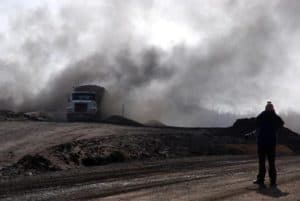
Credit: ejatlas.org
The three smokestacks of PacifiCorp’s coal-fired Hunter Power Plant loom in the skies on a 1,000-acre site just south of Castle Dale, Utah.
Commissioned in 1978, the Hunter plant burns millions of tons of coal a year and generates more than 1,500 megawatts of electricity for use in nearby communities.
But it also generates something else: greenhouse gases and toxic pollutants, including coal ash.
Coal ash, or coal-combustion residuals, is primarily produced from burning coal in power plants. It contains mercury, arsenic and other byproducts that can pollute waterways, drinking water and the air, according to the EPA. These chemicals can cause cancer, developmental disorders and reproductive problems, says Earthjustice, a nonprofit organization that specializes in litigation of environmental issues.
While some power plants dispose of coal ash in landfills, others discharge it into nearby waterways under the plants’ discharge permits.
Those discharges add up. According to the first comprehensive national study of coal-ash pollution, 91 percent of all coal plants in […]









